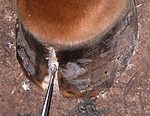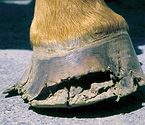Advertise Follow Us
Articles by Michael Wildenstein
Equine Body Conformation Should Inform Your Approach to Farriery
Rotational, flexural and angular deviations result in hoof-care needs that are unique from horse to horse and hoof to hoof
Read More
Understand Drafts' Farriery Needs Before Picking Up The Foot
Tips and advice to make trimming and shoeing easier for you and the horse
Read More
Are You Considering More Than Feet When You Trim And Shoe?
Understanding deviations will guide you in helping the horse, Hall Of Fame farrier tells Summit attendees
Read More
Treating Hoof Cracks And Other Hoof Maladies
Cornell farrier offers primer on therapeutic cases
Read More









